This is the second post in a series about how getting dressed, even when you’re only going from your bedroom to the living room and back again, can have an enormous impact on your mood, your sense of self, and how well you handle stress and change. I know very well the temptation to wear only stretchy pants and sweatshirts when working from (or just staying) home; I also know the insidious ways in which giving in to that temptation ate away at my ability to fight through mental fog and maintain a healthy headspace.
I learned through trial and error, by working from home over the past ten+ years–and then, as the result of some dark days, actively altering what I wear over the past two years–that there are some basic guidelines I can employ when getting dressed each day that give me the tools and the margin to intentionally improve my outlook and mental health. I’m sharing them here in hopes they’ll create a framework where we can have a bigger conversation about how sewing our own clothes allows us a window through which we can feed our hearts and minds.
For the introduction to the series, visit this post, and for a deeper dive, join us at the League of Dressmakers, where we’re developing this topic in greater depth, complete with silhouette guides, sewing pattern suggestions, video discussions and live chats!
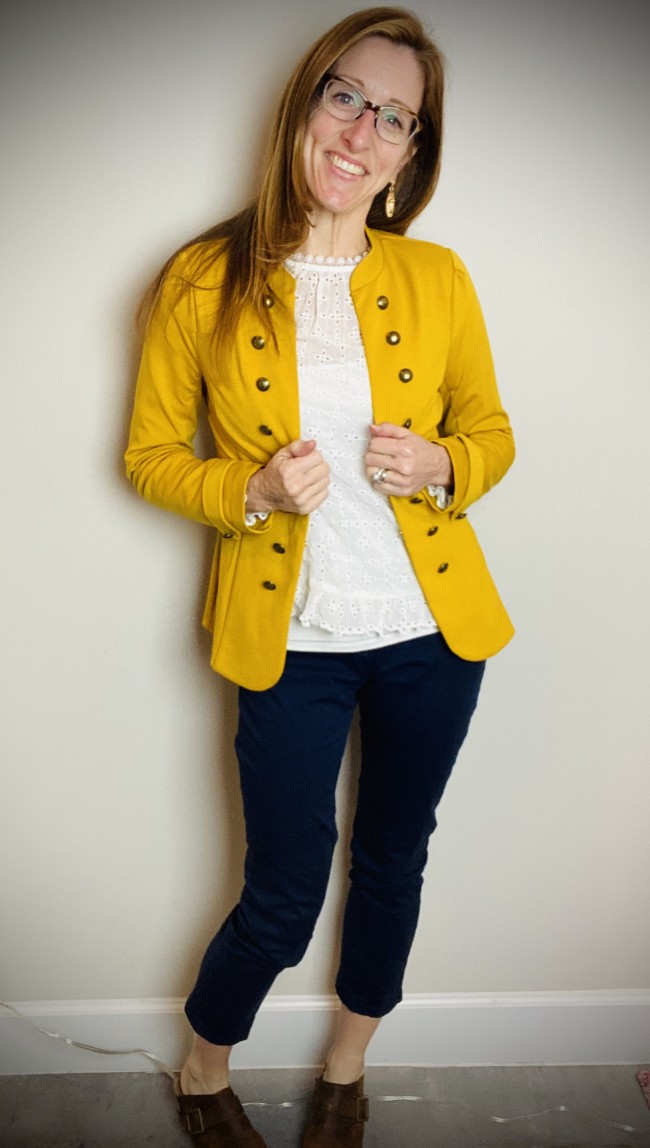
For almost two years, I’ve been challenging myself to wear MORE of the clothing I already own, to wear what I have in new ways, and to dress each day as if I’m going to be SEEN. I had fallen into a rut that functioned in many ways as hiding: if I didn’t TRY to look “my best,” then I couldn’t be hurt if people didn’t respond to me positively. There’s an element of vulnerability in putting effort into our clothing each day, where our garments serve as a reflection of how we see ourselves. Rather than allowing my self-image to be dictated by what I throw on mindlessly, I learned that setting intention and asking my clothes to SERVE MY NEEDS turned my wardrobe, both handmade and store-bought, into a TOOL rather than a hoard.
I can’t say to what degree my mental state caused or was affected by the lack of effort and interest I was putting into my own public appearance, it’s a little chicken-or-egg. I know for sure, though, that the four guidelines I’m sharing in this series had a major impact on how I view myself, how I feel each day, and how I respond to the people around me. I’m more patient, more kind, more empathetic, more considerate–not only with others, but AS A RESULT OF being
more of all those things with MYSELF.
This post, I’m sharing Guideline Number One: WEAR ALL YOUR THINGS.
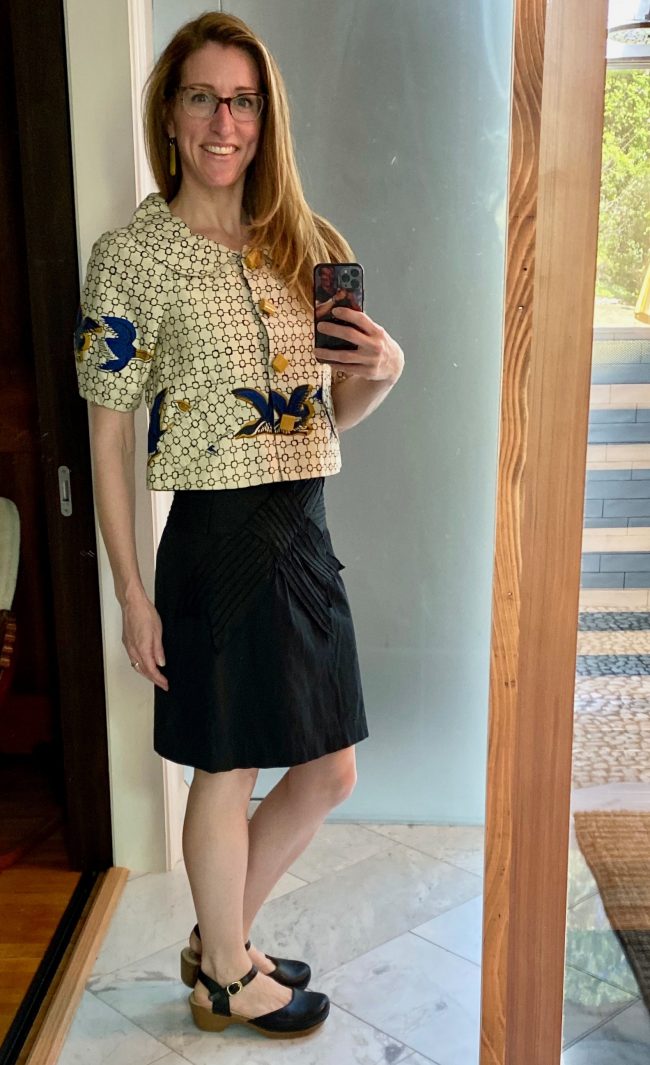
1. Turn your hangers around and wear ALL your things.
Years ago I learned the trick of
turning hangers backward on the rod in the closet, then turning them back to normal AFTER an item is worn; then, at the end of the year, anything with the hanger still backward is something I didn’t wear, and it gets summarily donated, no mercy. But what I lacked was a mechanism for how to intentionally encourage myself to vary my day-to-day wardrobe by selecting DIFFERENT items rather than leaning into the clothes I wear over and over again.
It’s all well and good to say “turn your hangers around” but that’s pretty useless if what happens is you wear the same three or four items, and all the rest remain on the rack gathering dust and getting little shoulder nipples from the hangers.
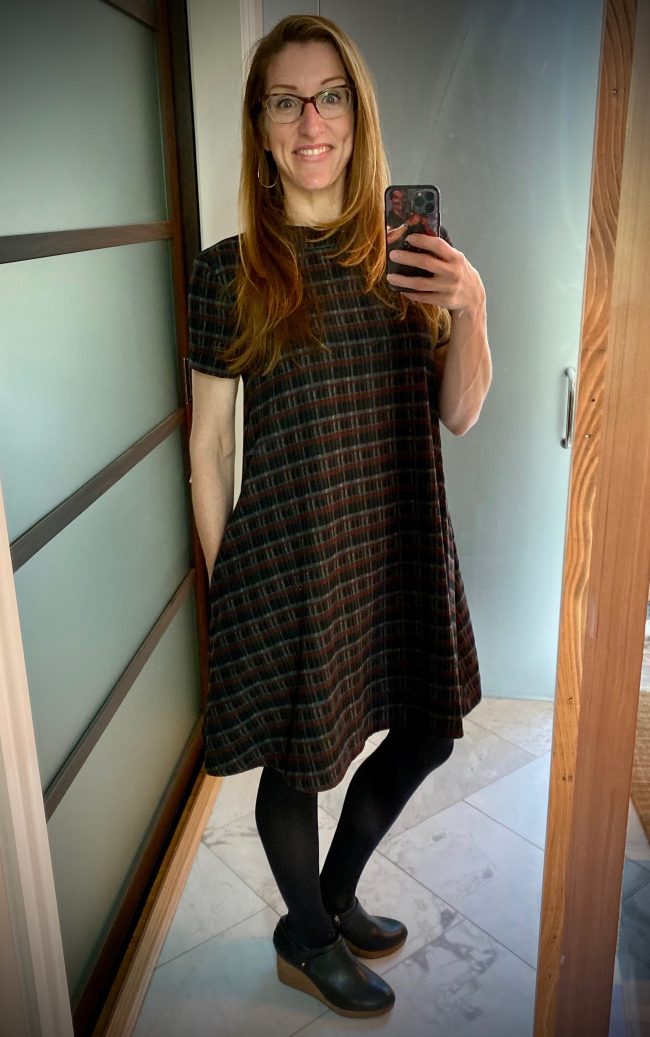
Instead, I worked to get dressed each day from the BACKWARD hangers first. Rather than turning an item around and checking the box, I wanted to require myself to wear something I had NOT worn recently, and if I didn’t wear it, to ask myself WHY: Does the silhouette not flatter me? Does the color not work with my other garments? Is this the wrong size? Is this too worn and threadbare to look “nice” anymore? Does this garment reflect the best version of me? Should I try styling this item with something I’ve never combined it with before?
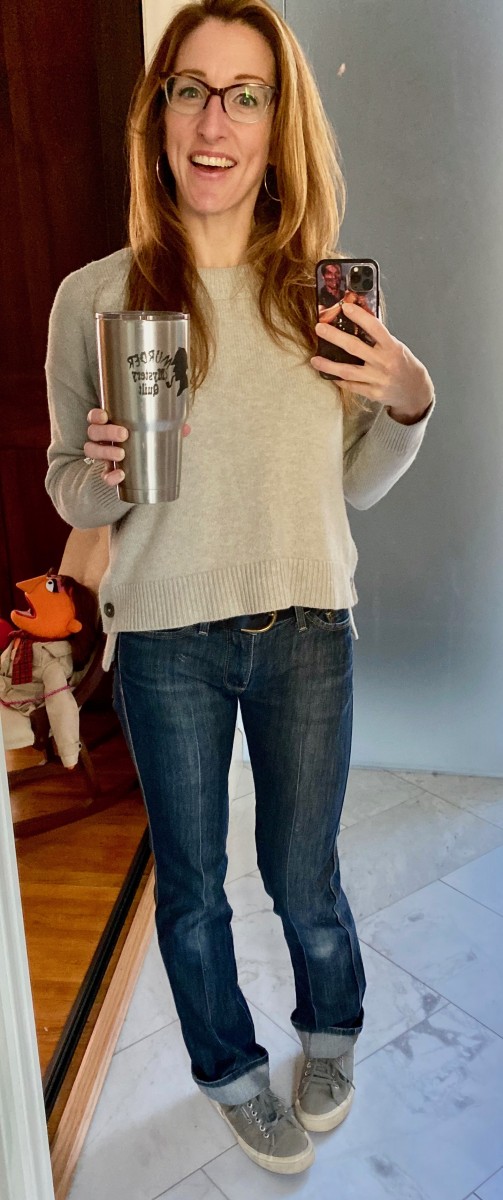
I have other things that aren’t on hangers, they’re on shelves or in drawers. I think I managed a lot of the rotation of my wardrobe in the past by default: it takes foreeeeever to fold the laundry, and so I’d work my way closer to the bottom of a drawer just because I’d run out of anything else to wear. Creating a “rule” where I worked to actively select items to wear that I didn’t frequently choose gave me an opening to ask myself some questions I wasn’t asking: WHY don’t I wear _____? HOW do I want to see myself? WHAT do I feel when I dress up/down/fancy/colorful? WHOM do I see in the mirror when I wear handmade vs store-bought? WHEN am I most likely to feel excited or powerful or expressive or cheerful or optimistic?
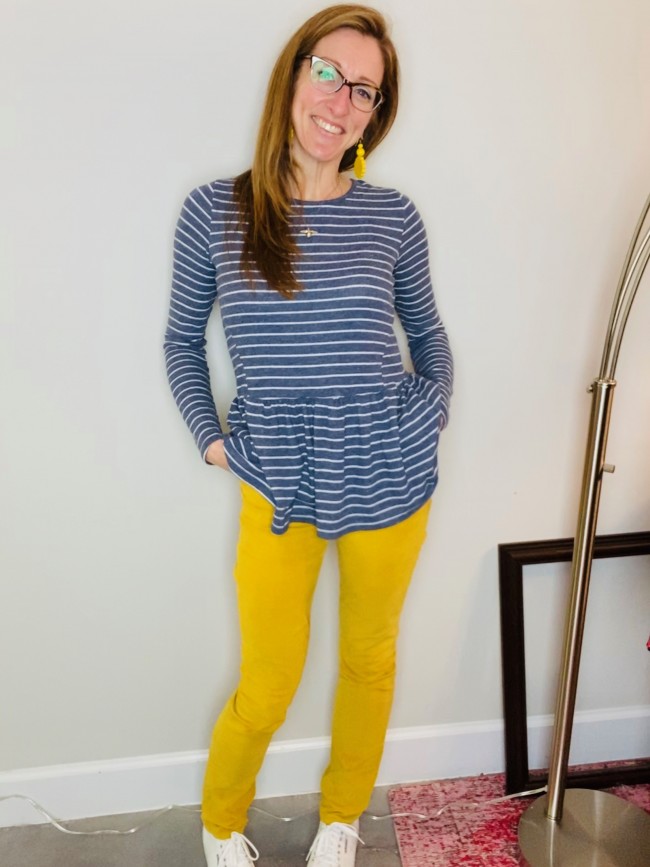
Starting with the hangers, and then pushing myself to wear the UN-worn parts of my wardrobe allowed me to be more analytical about what I see on the outside, which began to lead me to see a connection between my clothing and my mood. I began to see that even if I didn’t initially feel like wearing a particular garment, I could TAKE ON a more open or vibrant or adventuresome or playful mood simply by wearing the clothes that made me feel that way, reversing the order: I might not feel _____ right now, but this dress MAKES me feel _____, so when I wear it, I’m changing my outlook.
It’s almost a magic elixir.
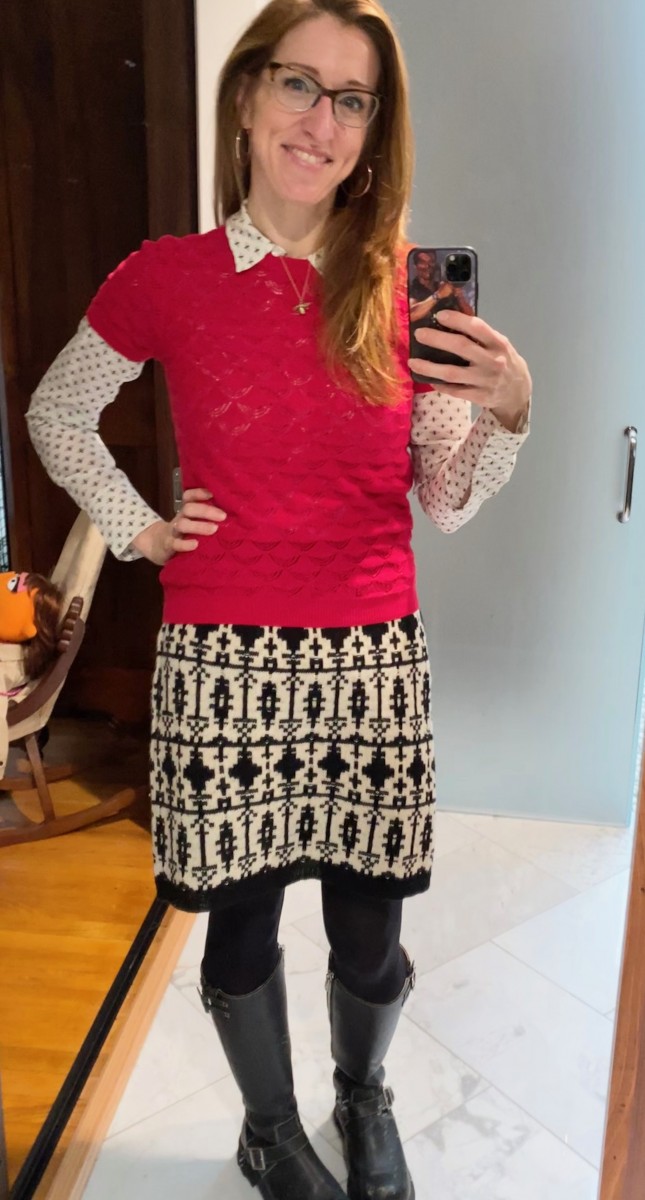
This process also helped me to SHRINK my wardrobe, by getting rid of things I wasn’t wearing and wasn’t GOING TO wear. Asking questions about why I rejected some items allowed me to discard garments way sooner than I might have otherwise, and have zero regrets; it also allowed me to really LOOK, the Dick & Jane kind of LOOK, at the clothes I had and begin to build a closet of pieces that were about my worldview and my goals and my self-image in a way that weighted my own sense of worth and mission beyond just covering up my parts each day.
In order to invite a mood or an emotion in, in order to SEEK OUT a feeling and then dress for it, I had to NAME IT FIRST. That was a task easily avoided when I was grabbing jeans off the end of the bed each morning, which meant I could go through my days on auto-pilot, and remain disengaged from my own emotions. That’s not a healthy place to be, y’all. By doing this ONE THING, turning the hangers around, I positioned myself to OBSERVE: my emotions, my reactions, my frustrations, my self-talk, my assumptions. I didn’t really DO anything, and that in itself was liberating, to not have to FIX anything, but to just observe without a requirement that I act or react.
In the next post of this series, I move deeper into analyzing my own habits when it came to how I was dressing, and the second rule I developed along the way that shook up what I was seeing in the mirror.
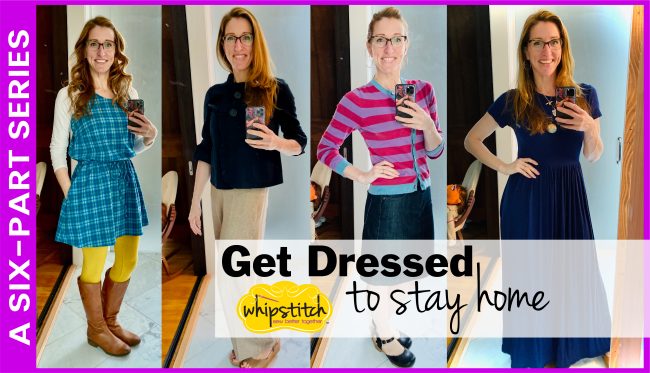 There’s a lot more to say about all these ideas, and I’ve developed a lot of them into a conversation for the League of Dressmakers. We talk about silhouette, balance, fabric selection, and which patterns can be used again and again to create a closet that’s an intentional reflection of the best parts of you. We would love to play with you over there–learn more here about the League!
There’s a lot more to say about all these ideas, and I’ve developed a lot of them into a conversation for the League of Dressmakers. We talk about silhouette, balance, fabric selection, and which patterns can be used again and again to create a closet that’s an intentional reflection of the best parts of you. We would love to play with you over there–learn more here about the League!
 For almost two years, I’ve been challenging myself to wear MORE of the clothing I already own, to wear what I have in new ways, and to dress each day as if I’m going to be SEEN. I had fallen into a rut that functioned in many ways as hiding: if I didn’t TRY to look “my best,” then I couldn’t be hurt if people didn’t respond to me positively. There’s an element of vulnerability in putting effort into our clothing each day, where our garments serve as a reflection of how we see ourselves. Rather than allowing my self-image to be dictated by what I throw on mindlessly, I learned that setting intention and asking my clothes to SERVE MY NEEDS turned my wardrobe, both handmade and store-bought, into a TOOL rather than a hoard.
I can’t say to what degree my mental state caused or was affected by the lack of effort and interest I was putting into my own public appearance, it’s a little chicken-or-egg. I know for sure, though, that the four guidelines I’m sharing in this series had a major impact on how I view myself, how I feel each day, and how I respond to the people around me. I’m more patient, more kind, more empathetic, more considerate–not only with others, but AS A RESULT OF being more of all those things with MYSELF.
This post, I’m sharing Guideline Number One: WEAR ALL YOUR THINGS.
For almost two years, I’ve been challenging myself to wear MORE of the clothing I already own, to wear what I have in new ways, and to dress each day as if I’m going to be SEEN. I had fallen into a rut that functioned in many ways as hiding: if I didn’t TRY to look “my best,” then I couldn’t be hurt if people didn’t respond to me positively. There’s an element of vulnerability in putting effort into our clothing each day, where our garments serve as a reflection of how we see ourselves. Rather than allowing my self-image to be dictated by what I throw on mindlessly, I learned that setting intention and asking my clothes to SERVE MY NEEDS turned my wardrobe, both handmade and store-bought, into a TOOL rather than a hoard.
I can’t say to what degree my mental state caused or was affected by the lack of effort and interest I was putting into my own public appearance, it’s a little chicken-or-egg. I know for sure, though, that the four guidelines I’m sharing in this series had a major impact on how I view myself, how I feel each day, and how I respond to the people around me. I’m more patient, more kind, more empathetic, more considerate–not only with others, but AS A RESULT OF being more of all those things with MYSELF.
This post, I’m sharing Guideline Number One: WEAR ALL YOUR THINGS.

 Instead, I worked to get dressed each day from the BACKWARD hangers first. Rather than turning an item around and checking the box, I wanted to require myself to wear something I had NOT worn recently, and if I didn’t wear it, to ask myself WHY: Does the silhouette not flatter me? Does the color not work with my other garments? Is this the wrong size? Is this too worn and threadbare to look “nice” anymore? Does this garment reflect the best version of me? Should I try styling this item with something I’ve never combined it with before?
Instead, I worked to get dressed each day from the BACKWARD hangers first. Rather than turning an item around and checking the box, I wanted to require myself to wear something I had NOT worn recently, and if I didn’t wear it, to ask myself WHY: Does the silhouette not flatter me? Does the color not work with my other garments? Is this the wrong size? Is this too worn and threadbare to look “nice” anymore? Does this garment reflect the best version of me? Should I try styling this item with something I’ve never combined it with before?
 I have other things that aren’t on hangers, they’re on shelves or in drawers. I think I managed a lot of the rotation of my wardrobe in the past by default: it takes foreeeeever to fold the laundry, and so I’d work my way closer to the bottom of a drawer just because I’d run out of anything else to wear. Creating a “rule” where I worked to actively select items to wear that I didn’t frequently choose gave me an opening to ask myself some questions I wasn’t asking: WHY don’t I wear _____? HOW do I want to see myself? WHAT do I feel when I dress up/down/fancy/colorful? WHOM do I see in the mirror when I wear handmade vs store-bought? WHEN am I most likely to feel excited or powerful or expressive or cheerful or optimistic?
I have other things that aren’t on hangers, they’re on shelves or in drawers. I think I managed a lot of the rotation of my wardrobe in the past by default: it takes foreeeeever to fold the laundry, and so I’d work my way closer to the bottom of a drawer just because I’d run out of anything else to wear. Creating a “rule” where I worked to actively select items to wear that I didn’t frequently choose gave me an opening to ask myself some questions I wasn’t asking: WHY don’t I wear _____? HOW do I want to see myself? WHAT do I feel when I dress up/down/fancy/colorful? WHOM do I see in the mirror when I wear handmade vs store-bought? WHEN am I most likely to feel excited or powerful or expressive or cheerful or optimistic?
 Starting with the hangers, and then pushing myself to wear the UN-worn parts of my wardrobe allowed me to be more analytical about what I see on the outside, which began to lead me to see a connection between my clothing and my mood. I began to see that even if I didn’t initially feel like wearing a particular garment, I could TAKE ON a more open or vibrant or adventuresome or playful mood simply by wearing the clothes that made me feel that way, reversing the order: I might not feel _____ right now, but this dress MAKES me feel _____, so when I wear it, I’m changing my outlook.
It’s almost a magic elixir.
Starting with the hangers, and then pushing myself to wear the UN-worn parts of my wardrobe allowed me to be more analytical about what I see on the outside, which began to lead me to see a connection between my clothing and my mood. I began to see that even if I didn’t initially feel like wearing a particular garment, I could TAKE ON a more open or vibrant or adventuresome or playful mood simply by wearing the clothes that made me feel that way, reversing the order: I might not feel _____ right now, but this dress MAKES me feel _____, so when I wear it, I’m changing my outlook.
It’s almost a magic elixir.
 This process also helped me to SHRINK my wardrobe, by getting rid of things I wasn’t wearing and wasn’t GOING TO wear. Asking questions about why I rejected some items allowed me to discard garments way sooner than I might have otherwise, and have zero regrets; it also allowed me to really LOOK, the Dick & Jane kind of LOOK, at the clothes I had and begin to build a closet of pieces that were about my worldview and my goals and my self-image in a way that weighted my own sense of worth and mission beyond just covering up my parts each day.
In order to invite a mood or an emotion in, in order to SEEK OUT a feeling and then dress for it, I had to NAME IT FIRST. That was a task easily avoided when I was grabbing jeans off the end of the bed each morning, which meant I could go through my days on auto-pilot, and remain disengaged from my own emotions. That’s not a healthy place to be, y’all. By doing this ONE THING, turning the hangers around, I positioned myself to OBSERVE: my emotions, my reactions, my frustrations, my self-talk, my assumptions. I didn’t really DO anything, and that in itself was liberating, to not have to FIX anything, but to just observe without a requirement that I act or react.
In the next post of this series, I move deeper into analyzing my own habits when it came to how I was dressing, and the second rule I developed along the way that shook up what I was seeing in the mirror.
This process also helped me to SHRINK my wardrobe, by getting rid of things I wasn’t wearing and wasn’t GOING TO wear. Asking questions about why I rejected some items allowed me to discard garments way sooner than I might have otherwise, and have zero regrets; it also allowed me to really LOOK, the Dick & Jane kind of LOOK, at the clothes I had and begin to build a closet of pieces that were about my worldview and my goals and my self-image in a way that weighted my own sense of worth and mission beyond just covering up my parts each day.
In order to invite a mood or an emotion in, in order to SEEK OUT a feeling and then dress for it, I had to NAME IT FIRST. That was a task easily avoided when I was grabbing jeans off the end of the bed each morning, which meant I could go through my days on auto-pilot, and remain disengaged from my own emotions. That’s not a healthy place to be, y’all. By doing this ONE THING, turning the hangers around, I positioned myself to OBSERVE: my emotions, my reactions, my frustrations, my self-talk, my assumptions. I didn’t really DO anything, and that in itself was liberating, to not have to FIX anything, but to just observe without a requirement that I act or react.
In the next post of this series, I move deeper into analyzing my own habits when it came to how I was dressing, and the second rule I developed along the way that shook up what I was seeing in the mirror.
 There’s a lot more to say about all these ideas, and I’ve developed a lot of them into a conversation for the League of Dressmakers. We talk about silhouette, balance, fabric selection, and which patterns can be used again and again to create a closet that’s an intentional reflection of the best parts of you. We would love to play with you over there–learn more here about the League!
There’s a lot more to say about all these ideas, and I’ve developed a lot of them into a conversation for the League of Dressmakers. We talk about silhouette, balance, fabric selection, and which patterns can be used again and again to create a closet that’s an intentional reflection of the best parts of you. We would love to play with you over there–learn more here about the League!

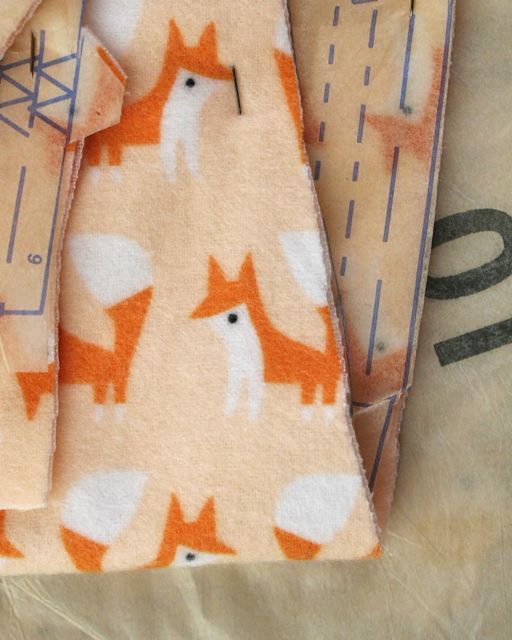
Diane
April 15, 2020 at 6:02 pmYesterday I noticed that I looked like the character of “Stevie” on Schitt’$ Creek; flannel plaid shirt and denim overalls. These actually are my work clothes (I have a flea market booth and had been painting furniture) but, nonetheless, I looked sad. Very surprising for me, since the author of this blog knows I LUUUURVE clothes and styling my wardrobe has been a lifelong obsession. But here, dear reader, is the point: I’ve got to do better. I’ve fallen into the rut (after being retired for 10 months) of not taking the time to dress more intentionally. So, Deborah, a tip of the hat from the oak to the acorn.
Deborah
April 17, 2020 at 4:37 pmThere was an article this week in the LA Times about this same idea, and he’s experiencing this HUGE backlash where people (mostly on Twitter) are saying that the idea of “enough with the sweatpants” is (1) insulting to people who are really struggling right now, and (2) shouldn’t be advice accepted from someone who looks like [insert insulting description of the journalist here]. But I think your comment is more to the point: one day, no matter how you’ve prioritized your own sense of self in the past, if you look up and are jarred by what you see, there’s a disconnect between your Inside-You and your Outside-You, and THAT is what I want to prioritize, that sense of integrity, like, I think what I bring to the table on my body reflects how I see what I bring to the table on my interior. I think that honors me, and that people who are struggling right now (or ever) are worthy of being honored in small ways, like wearing a flattering garment. I’m surprised at the backlash on his article, because growing up, I certainly saw you model that what we wear is a reflection of how we feel about ourselves IN THE MOMENT. Grateful for you!! <3
Deborah
April 17, 2020 at 4:37 pmArticle here: https://www.latimes.com/lifestyle/story/2020-04-17/working-from-home-regular-work-wardrobe-dress-up